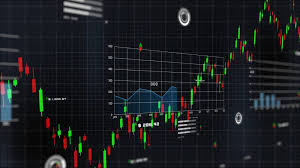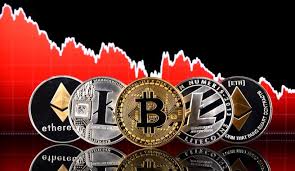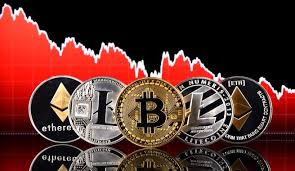The Ultimate Guide to the Crypto Trading Framework
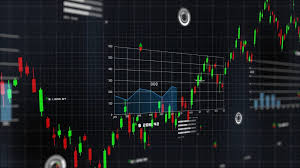
The Ultimate Guide to the Crypto Trading Framework
The world of cryptocurrency trading is fast-paced and constantly evolving. To navigate this complex environment, traders need a robust framework that provides structure and guidance. This article delves into the essential components of a Crypto Trading Framework, equipping you with the tools and strategies necessary to succeed in this dynamic market. Additionally, we explore resources and communities that can enhance your understanding and performance as a trader. For those interested in further engagement, check this link: Crypto Trading Framework https://www.freedomsphoenix.com/Forum/Add?EdNo=001&Type=News&Info=085106.
1. Understanding the Crypto Market
The cryptocurrency market is unique due to its decentralized nature and lack of regulation compared to traditional financial markets. Understanding the market structure is crucial for any trader. Key components include the different types of exchanges (centralized vs decentralized), market participants (retail vs institutional), and the fundamentals of various cryptocurrencies.
1.1 Market Participants
Traders fall into several categories: retail investors, who trade using personal funds; institutional investors, which include hedge funds and large corporations; and miners, who create new coins. Each group has different motivations, strategies, and impacts on market dynamics. Understanding these categories can provide insights into market movements and potential price actions.
1.2 Types of Exchanges
Exchanges serve as the marketplace for trading cryptocurrencies. Centralized exchanges (CEX) offer greater liquidity and ease of use, while decentralized exchanges (DEX) provide enhanced security and privacy but often come with lower liquidity. Each type has its pros and cons, and your choice of exchange can significantly affect your trading strategy.
2. Setting Up Your Trading Framework
A successful crypto trading framework comprises multiple elements, including risk management, trading psychology, analysis techniques, and strategy development. Below we’ll detail these components to help you establish a solid foundation.
2.1 Risk Management
Risk management is arguably the most crucial aspect of any trading framework. The crypto market is notorious for its volatility, leading to potential losses if risks are not properly managed. Traders should determine their risk tolerance, set stop-loss orders, and never risk more than a predetermined percentage of their capital on a single trade.
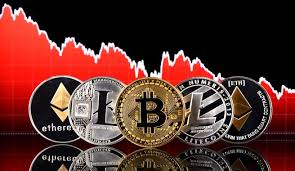
2.2 Trading Psychology
Psychological resilience is vital in trading. The highs and lows of trading can lead to emotional decisions, which often result in poor outcomes. Developing self-discipline, maintaining a trading journal, and practicing mindfulness can help traders stay calm and make rational decisions during volatile market conditions.
2.3 Technical and Fundamental Analysis
Two main types of analysis will guide your trading decisions: technical analysis and fundamental analysis. Technical analysis involves using historical price data and chart patterns to predict future price movements. On the other hand, fundamental analysis focuses on the overall health and potential of a cryptocurrency, including its technology, team, and market position.
2.3.1 Technical Analysis Basics
Understanding chart patterns, indicators (like RSI, MACD, and moving averages), and candlestick formations is essential in technical analysis. These tools help traders identify accumulation and distribution phases, breakout points, and trend reversals, providing actionable insights into market behavior.
2.3.2 Fundamental Analysis Considerations
When conducting fundamental analysis, consider factors such as the technology behind the cryptocurrency, the team behind the project, its use case, partnerships, community support, and market competition. Analyzing these components will help you ascertain whether a coin is undervalued or overvalued compared to its market price.
3. Developing Your Trading Strategy
Your trading strategy is the backbone of your crypto trading framework. It should be tailored to your trading goals, style, and risk tolerance. Here are a few common strategies used in crypto trading.
3.1 Day Trading
Day trading involves entering and exiting trades within a single day to capitalize on short-term price movements. This strategy requires a firm grasp of technical analysis and the ability to react quickly to market changes.
3.2 Swing Trading
Swing trading is a medium-term strategy where traders aim to profit from price swings in the market. This approach allows traders to hold positions for several days or weeks, providing opportunities to capitalize on market trends without the constant monitoring required in day trading.

3.3 HODLing
The term “HODL” originated as a misspelled post in an online forum, advocating for long-term holding of cryptocurrencies. This strategy emphasizes buying coins and holding them for an extended period, betting on future growth instead of short-term gains.
4. Tools and Resources
Using the right tools can significantly enhance your trading performance. Here are some essential resources every cryptocurrency trader should consider:
4.1 Trading Platforms
Choose a reliable trading platform that suits your needs. Popular options include Binance, Coinbase Pro, and Kraken. Look for features like advanced charting tools, a user-friendly interface, and a wide range of available cryptocurrencies.
4.2 Portfolio Tracking Apps
Maintaining a clear picture of your assets and their performance is crucial. Use portfolio tracking tools like Blockfolio or Delta to monitor your investments and receive alerts for price changes.
4.3 Educational Resources
Stay informed with reputable cryptocurrency resources, including blogs, podcasts, and forums. Engage with online communities to share knowledge and experiences. Websites like CoinDesk and CoinTelegraph provide valuable insights into market trends.
5. Staying Updated on Market Trends
The cryptocurrency landscape changes rapidly. Staying updated on market trends, regulatory updates, and technological developments is essential. Follow influential figures in the crypto space on social media and subscribe to relevant newsletters to keep your finger on the pulse.
Conclusion
Creating a solid Crypto Trading Framework is vital for navigating the complex world of cryptocurrency trading. By understanding the market, setting up a comprehensive trading framework, developing a robust strategy, and utilizing essential tools, you can position yourself for success. Remember that trading is a journey, not a sprint, and continuous learning is the key to long-term profitability.

